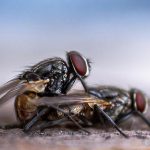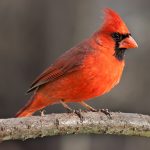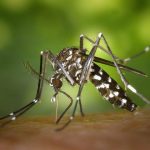Animals that are domesticated and those that are wild have quite diverse physical traits. One such differentiating trait is the presence of stripes on the body. Identification of the animals is based on their stripes, in the same way that fingerprints and skin colour are used to identify humans.
Why Do Animals Have Stripes?
Many theories have been proposed as to why these animals are striped. Striping breaks up their form, making predators that are lurking nearby unable to see them as well, which is the most widely accepted explanation for why they’re disguised in their environment. As a result of their ability to blend in with their surroundings, animals with stripes are better able to survive in the wild than those without stripes.
Tiger
| Scientific Name | Panthera tigris |
| Type of Animal | Mammal |
| Diet | Carnivore |
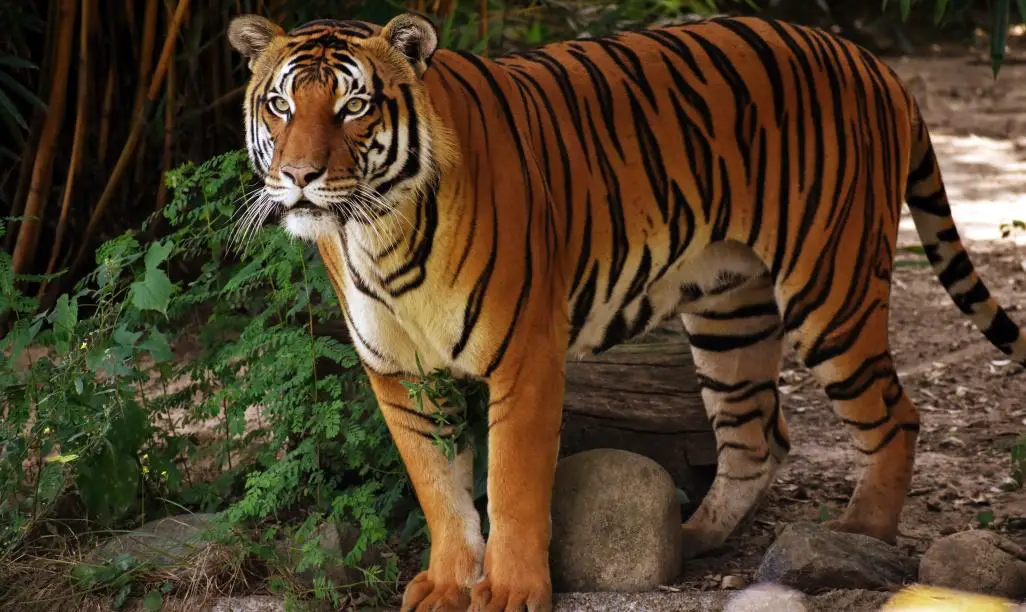
Various European and Asian habitats are home to this apex predator. This species is well known for its striking stripes, which help it blend in with the darkness of the forests where it preys.
Their unusual striped coats, which are sought after for their fur, have put tigers in danger of extinction. A tiger’s most distinguishing characteristic is its stripes. Because no two stripes on a tiger are the same, it may be identified in the same way a fingerprint can be. Although the stripes are normally brownish-black, they may vary in colour depending on the tiger species. Tigers have stripes all over their bodies, not just on their fur. There are more than 100 stripes on tigers’ coats in the wild, which they use as a disguise when hunting.
Zebra
| Scientific Name | Equus zebra |
| Type of Animal | Mammal |
| Diet | Herbivore |
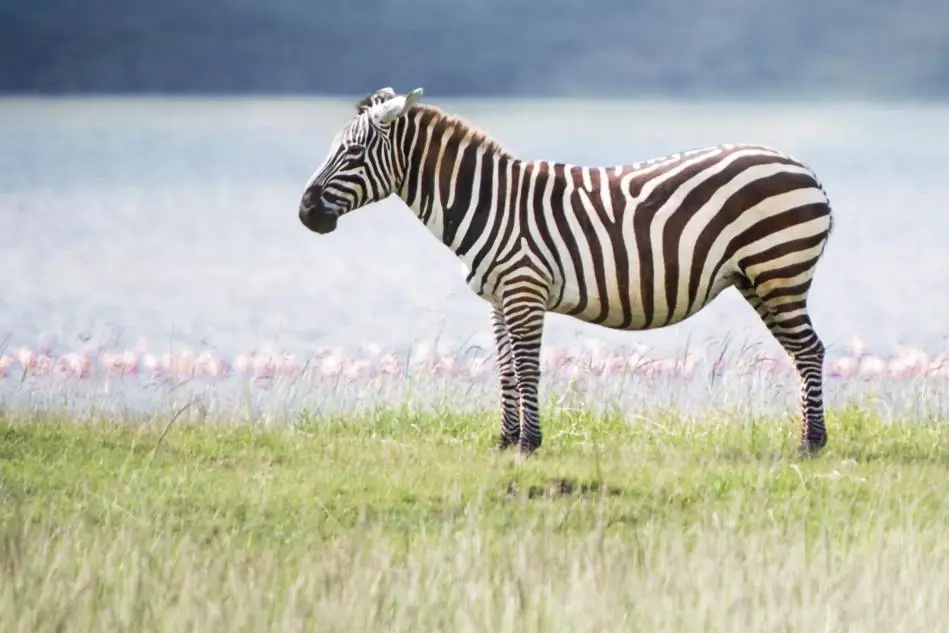
As herbivores that consume grass and shrubs, the majority of the zebra population is concentrated in the African savannah.
The zebra uses its distinctive black-and-white stripes as a defense mechanism. Striped patterns produce an optical illusion that confuses predators and pests. Make it look like the zebras are heading in one direction, but in fact, they are going the other way! This results in predators and insects biting at the wrong times and in the wrong locations. When they’re in herds, the zebras’ stripes pop against the greenery, but when they’re traveling alone, their patterns blur together.
Okapi
| Scientific Name | Okapia johnstoni |
| Type of Animal | Mammal |
| Diet | Herbivore |
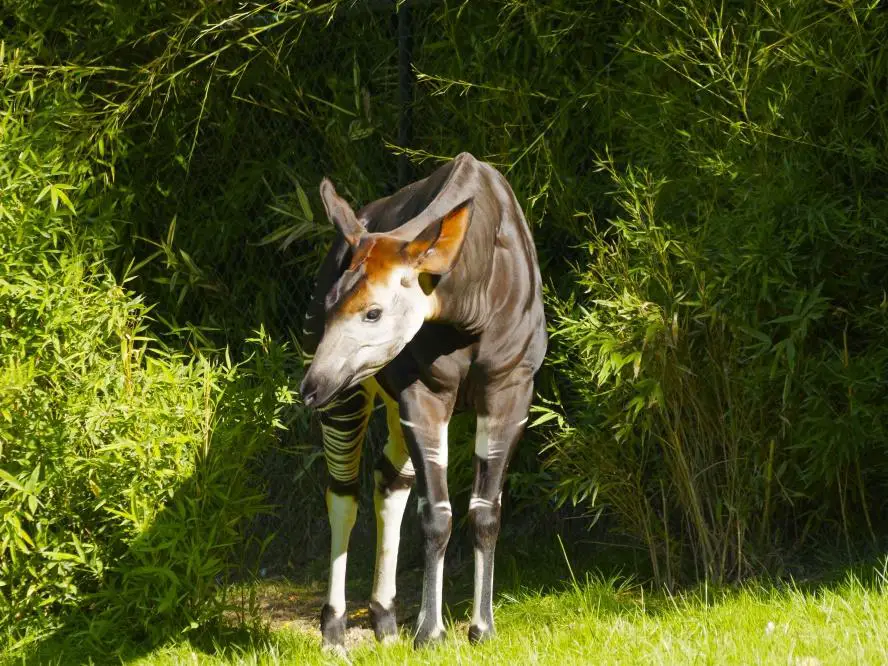
Okapis are primarily prevalent in Central Africa, but they may be found around the world. The okapia are strikingly similar in appearance to giraffes, except that they are shorter and have stripes instead of the giraffe’s magnificent patches. The okapi’s white markings stand out against their dark skin. Both the back and the front of their legs are striped. They are able to hide from predators since they have just striped legs.
In order to remain undetected, they might stand in the forest’s partial sunlight. In the dark bush, the lines help the baby okapi find its mother. Because they are at the calf’s eye level, they help the calf recognize its mother. Some people believe that the stripes serve as a magnet for lovers who stand nose-to-nose while exchanging sniffs.
For More FAQs On The Okapi Check Out Our Other Article Here
Striped Skunk
| Scientific Name | Mephitidae |
| Type of Animal | Mammal |
| Diet | Omnivore |
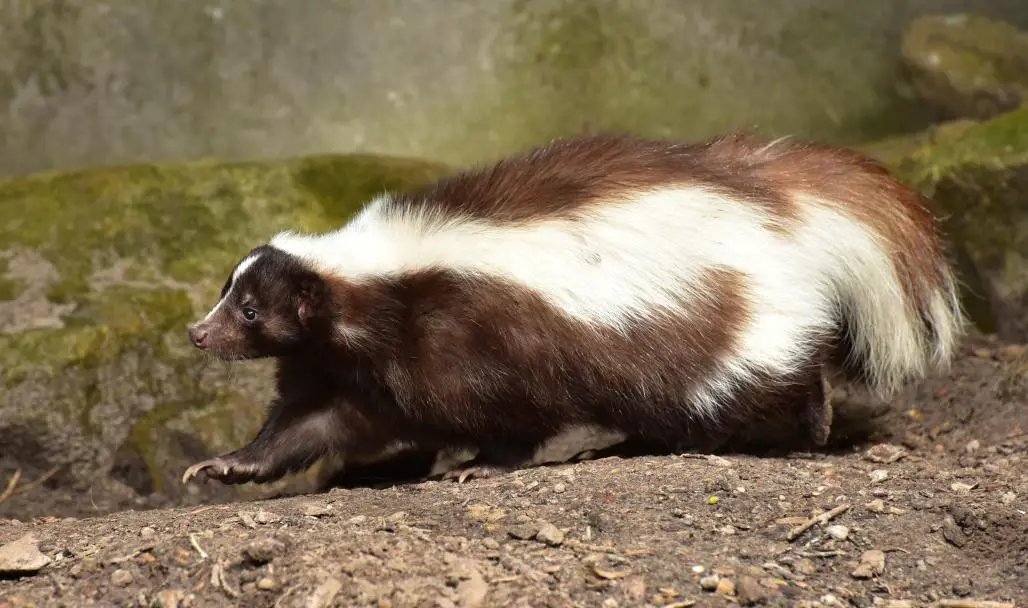
In North America and Mexico, they may be found all across the country, particularly in the southern and central parts of Canada. One stripe on the head of striped skunks is broken up into two parallel lines that run down their bodies to their tails.
In contrast to the rest of their coats, which are solid black, their tails have a contrasting white undercoat. Like the stripes of other animals, each individual’s zebra has its own pattern. Because of their small legs and lack of disguise, skunks aren’t very good at evading predators. In order to protect themselves from their attacker, they use a method that doesn’t bother them.
Striped Chipmunk
| Scientific Name | Tamias striatus |
| Type of Animal | Mammal |
| Diet | Omnivore |
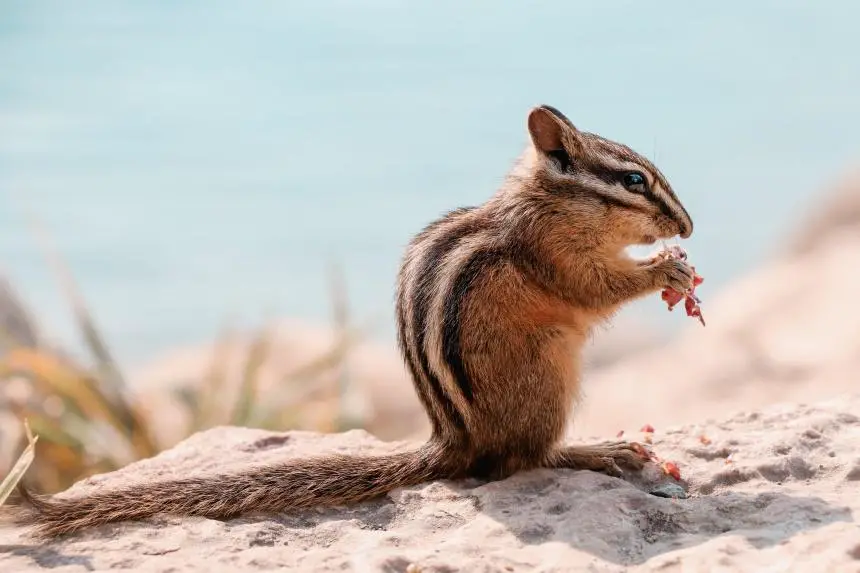
Of all the striped rodents, chipmunks are the most well-known. They belong to the squirrel family and may be found mostly in the United States and Canada. Their backs are covered in red-gray fur with black streaks. Because they are shielded from birds, striped chipmunks prefer to reside in rocky areas.
As it races through the woods, a chipmunk’s stripes help it blend in with its environment. The chipmunk’s brown, black, and white fur helps it blend in with the trees and foliage around it. Chipmunks are capable of scavenging while going undetected by birds.
Bongo
| Scientific Name | Tragelaphus euryceus euryceus |
| Type of Animal | Mammal |
| Diet | Herbivore |
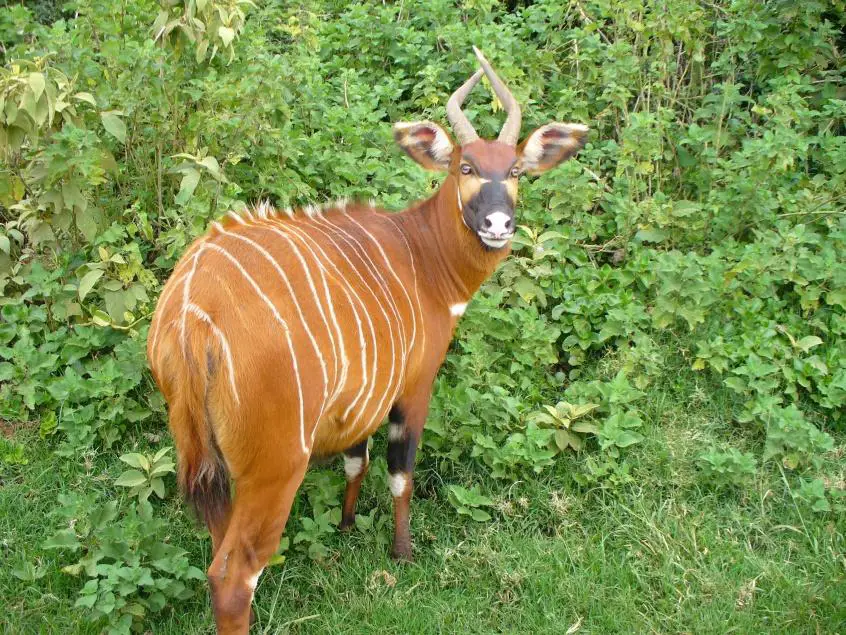
In terms of size, bongo antelopes are the third biggest in the world, and they are striped on both the male and the female.
About ten to fifteen white stripes cover this animal’s body, running vertically and barely extending to its legs. The white stripes on the belly and legs are contrasted by the black tone on the belly and legs of these dogs. Light is broken up by their stripes, making the bongo difficult to see. Bongos live in small groups and eat mostly grass, twigs, and bushes, which they find in their natural habitat. Their chestnut-brown coats have sparkling white stripes that help them blend in.
Ring Tailed Lemur
| Scientific Name | Lemuroidea |
| Type of Animal | Mammal |
| Diet | Herbivore, Omnivore |
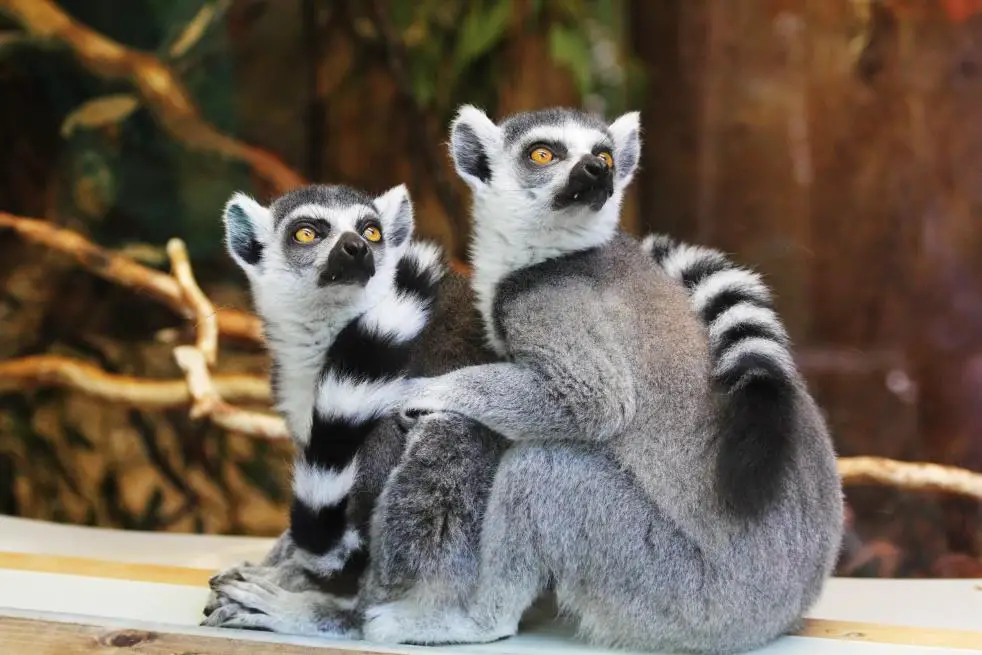
These primates can only be found in Madagascar. These lemurs are known for their black and white ringed tails and long, bushy limbs. Much like other primates, primate lemurs love to live in trees and move about using their hands or feet. For the most part, they live in groups of six to 30 lemurs. Ring-tailed lemurs have unique scent glands and territorial tendencies. The stripes on these striped monkeys are both a means of communication and a means of defense against other lemurs. To mate, the males compete by marking the most territory, and the winner is the one with the female.
Greater Kudu
| Scientific Name | Tragelaphus strepsiceros |
| Type of Animal | Mammal |
| Diet | Herbivore |
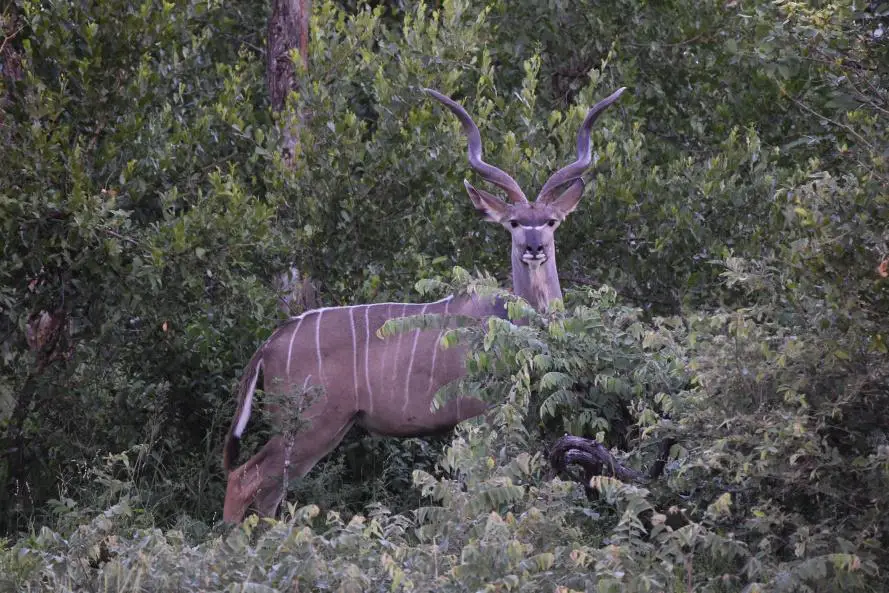
These animals are most often seen in southern Africa. There are up to 12 stripes running vertically along its body, which gives it a brownish hue. Consequently, they’re able to hide in the forests and meadows with relative ease. They’re also quite observant, which means they’ll be able to detect predators before they arrive. One meter is the equivalent of two and a half twists in men. At approximately six and twelve months old, they begin to develop the characteristic horns on their heads. Males aren’t aggressive, but when mating, they’re known to engage in fights until one of them gives up or dies, which is not uncommon. For their skins and flesh, they are considered a near-threatened species.
Striped Mouse
| Scientific Name | Lemniscomys |
| Type of Animal | Mammal |
| Diet | Omnivore |
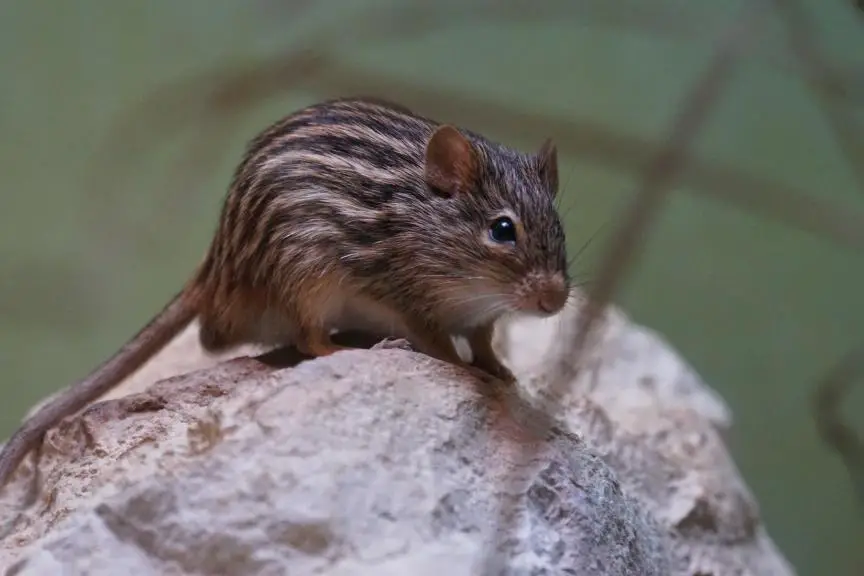
When it comes to creatures with stripes, striped mice are a must-see. Mice with stripes can better fit in with their environment on the ground, which is an advantage for certain types of mice. In the deserts of northern Africa, this species is often encountered. They are small and may be tamed, growing to a maximum of around five inches in length.
To distinguish it from other mice, the striped mouse has brown fur and black stripes along the length of its body. These tiny creatures eat a variety of plant-based meals, including insects, seeds, nuts, and more. However, they aren’t picky eaters, and their food intake varies throughout the year.
Giant Striped Mongoose
| Scientific Name | Galidictis grandidieri |
| Type of Animal | Mammal |
| Diet | Carnivore |
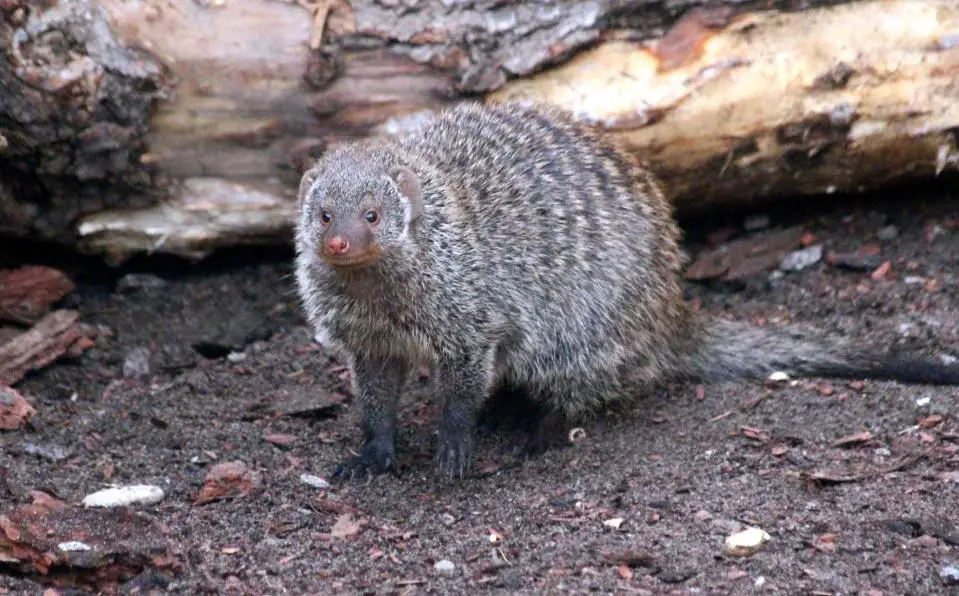
A mongoose of Madagascar, the Grandidier’s mongoose, is also known by that name and may be found there. They are brownish grey with eight black stripes and a long tail. They are covered with hair. In addition to the black and white stripes, it’s possible to see white horizontal stripes flowing throughout the design. There are two types of Malagasy mongooses: the broad-striped and the narrow-striped. The white and black stripes on their bodies come to an end at the rump, when a bushy white tail starts to grow. The yellow and black stripes on their coats help them blend in, which is surprising since their natural habitat is bright yellow.
African Wild Ass
| Scientific Name | Equus africanus |
| Type of Animal | Mammal |
| Diet | Herbivore |
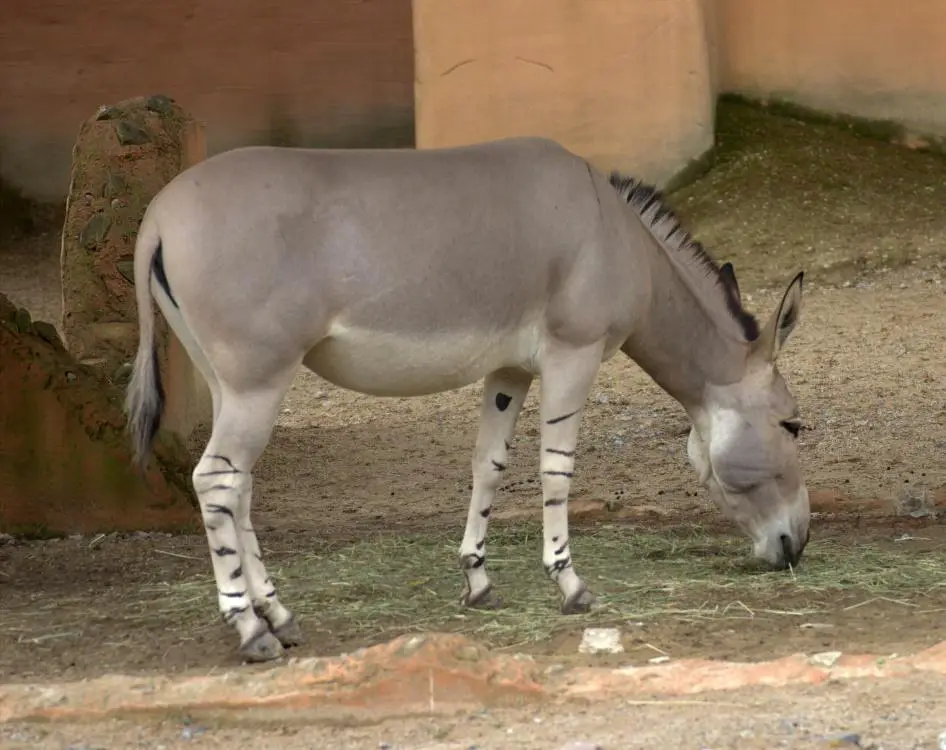
The African wild ass, a close cousin of the African donkey, is found in Somalia and Ethiopia. However, it has a light brown coat with horizontal stripes on its legs, which is unusual. In addition, this animal’s neck and shoulders are covered in black fur. The horizontal stripes on its legs mimic the stripes on the legs of the zebra, which is interesting. In the deserts, this species may be found in areas that are rocky and mountainous. It can survive a 30% water loss in its overall weight and just requires a five-minute sip to rehydrate. To satisfy their hunger, they eat the grass that is available.
Striped Hyena
| Scientific Name | Hyaena hyaena |
| Type of Animal | Mammal |
| Diet | Omnivore |
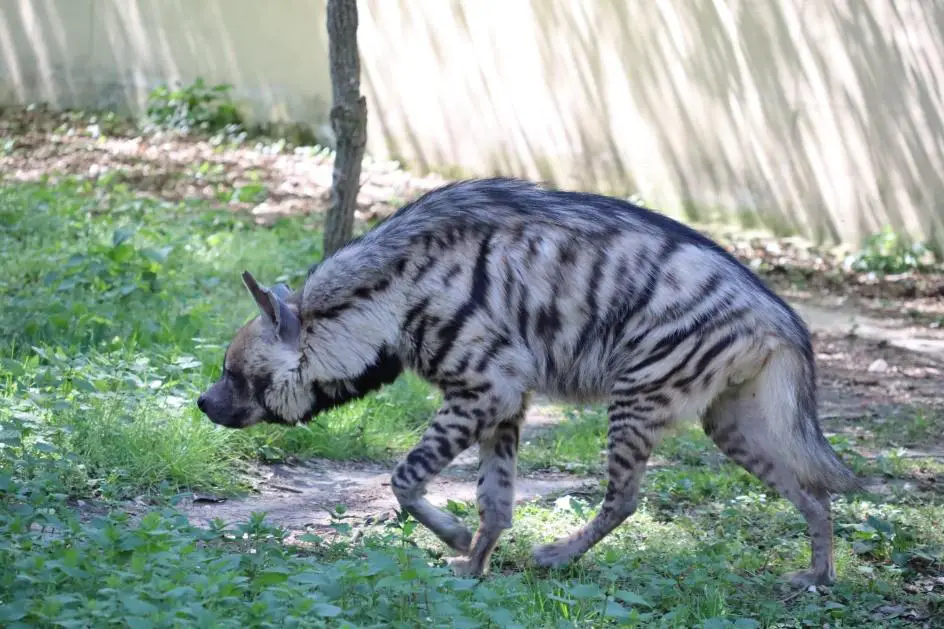
Hyenas are renowned for their plain or spotty coats, but there is a breed with stripes. This species is found in East and North Africa, as well as in certain parts of Asia. The striped hyenas have filthy grey coat with black lines running down their backs and shoulders. Typically, it has a thicker coat of fur that keeps it warm in the winter and loses it during the summer months. Striped hyenas resemble the spotted hyena in appearance. They have longer front legs than back legs and a long mane that runs from the neck to the tail, making them look more aggressive. The stripes on striped hyenas help them blend in with the tall grass, which makes them shy.
Coral Snake
| Scientific Name | Micrurus lemniscatus |
| Type of Animal | Reptile |
| Diet | Carnivore |
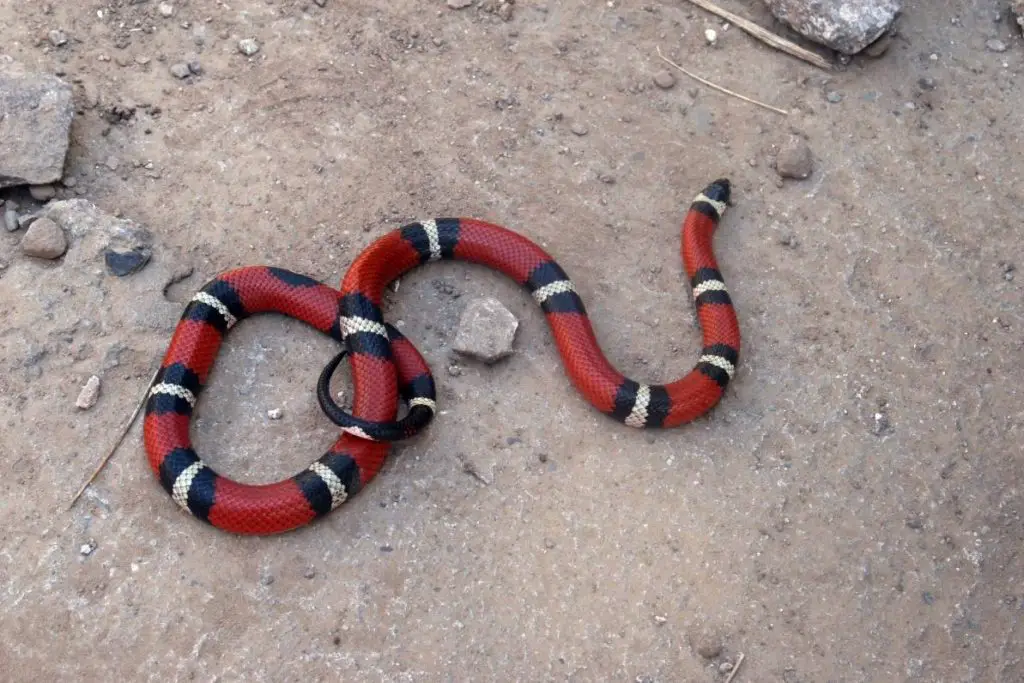
Coral snakes are brightly colored, medium-sized reptiles native to the USA. They are highly venomous snakes with brilliantly colored stripes that serve as a warning to predators of their presence. These snakes seldom exceed a length of four feet. They may be found in swamps, woodlands, and sand. Carnivores, and coral snakes, like to eat skinks, which they often do. The colors of a coral snake’s stripes act as a deterrent to predators. There are yellow bands around red stripes on the body of a coral snake. The bright stripes of the coral snake warn predators of the snake’s venomous bite when they see it. This protects the snake as well as any possible predators it may encounter.
Numbat
| Scientific Name | Myrmecobius fasciatus |
| Type of Animal | Mammal |
| Diet | Carnivore |
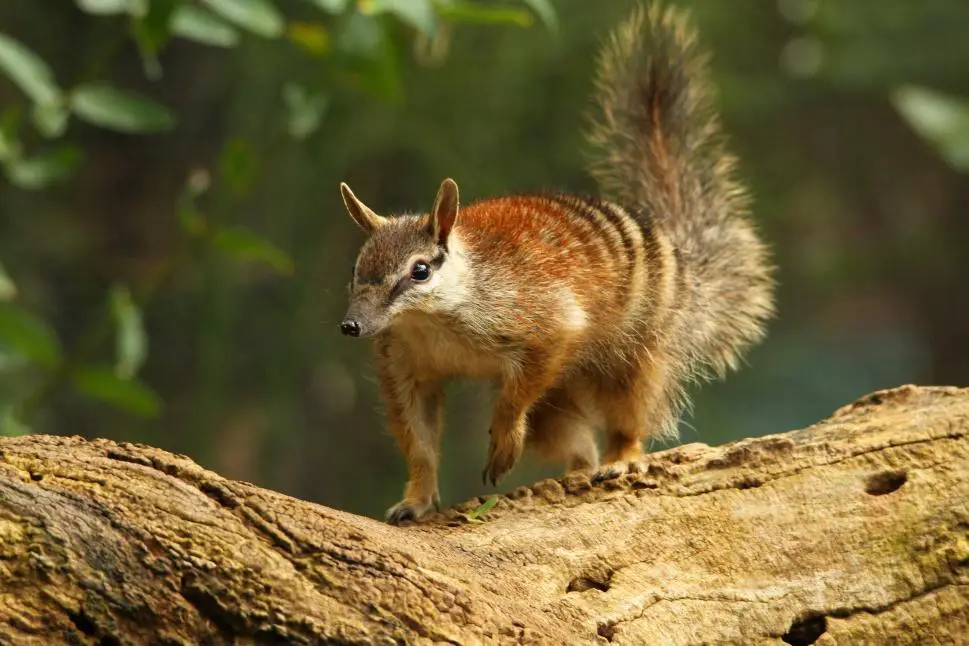
The numbat, also known as the walpurti, is an insectivorous mammal native to Australia. Because of their coloration, they are able to blend in with their environment. Its top body surfaces are covered in a vertical band of black fur, with yellow stripes running down the side of it. There is a distinct difference in color between the stripes on the back of the body and the head. Because of their lengthy, black-striped coats, numbats are difficult to see by birds, snakes, and other animals.
Juvenile Tapir
| Scientific Name | Tapiridae |
| Type of Animal | Mammal |
| Diet | Omnivore |
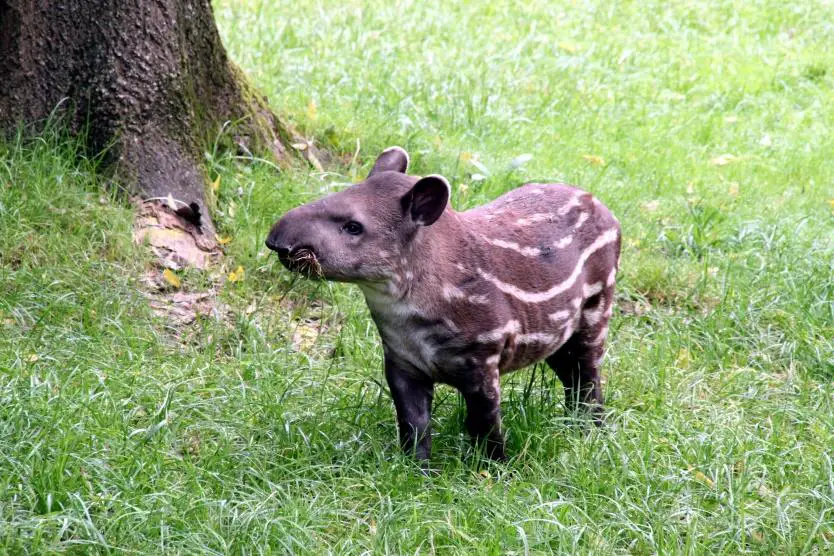
Tapirs may be found in South America, Southeast Asia, Brazil, Mexico, Thailand, and Malaysia. Adults have a reddish-brown coat with short hair but no striped fur, and if striped fur is present, it is modest in size. In comparison to adult tapirs, young tapirs have a pronounced stripe. A young tapir has a dark brown coat with a white stripe that runs horizontally across the body and white specks of fur. Surprisingly, the horizontal stripes on the spots of adolescent tapirs aid in camouflaging in their habitats.
Clown Fish
| Scientific Name | Amphiprioninae |
| Type of Animal | Fish |
| Diet | Omnivore |
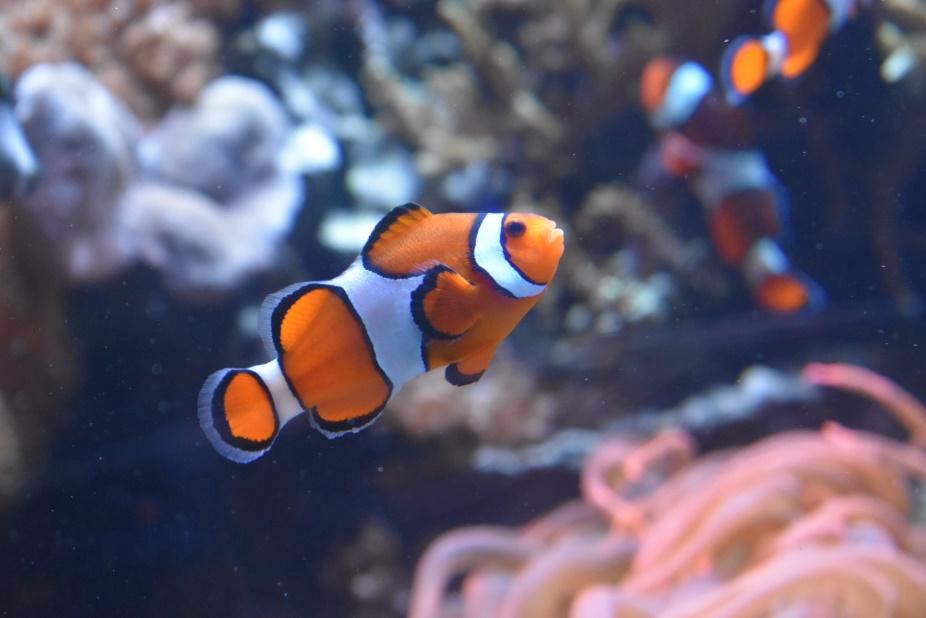
The clownfish is a brightly colored fish that may be found in the Red Sea, the Pacific Ocean, lagoons, and among anemones.
Stripes of white run vertically across their orange-reddish bodies, making them easy to see. The first white vertical stripe is located just behind the eyes, the second in the middle of the body, and the third towards the tail of the animal. The orange color and white and black lines on the body help them blend in with the sea anemone, which is one of their favorite hiding places.
Indian Palm Squirrel
| Scientific Name | Funambulus palmarum |
| Type of Animal | Mammal |
| Diet | Herbivore |
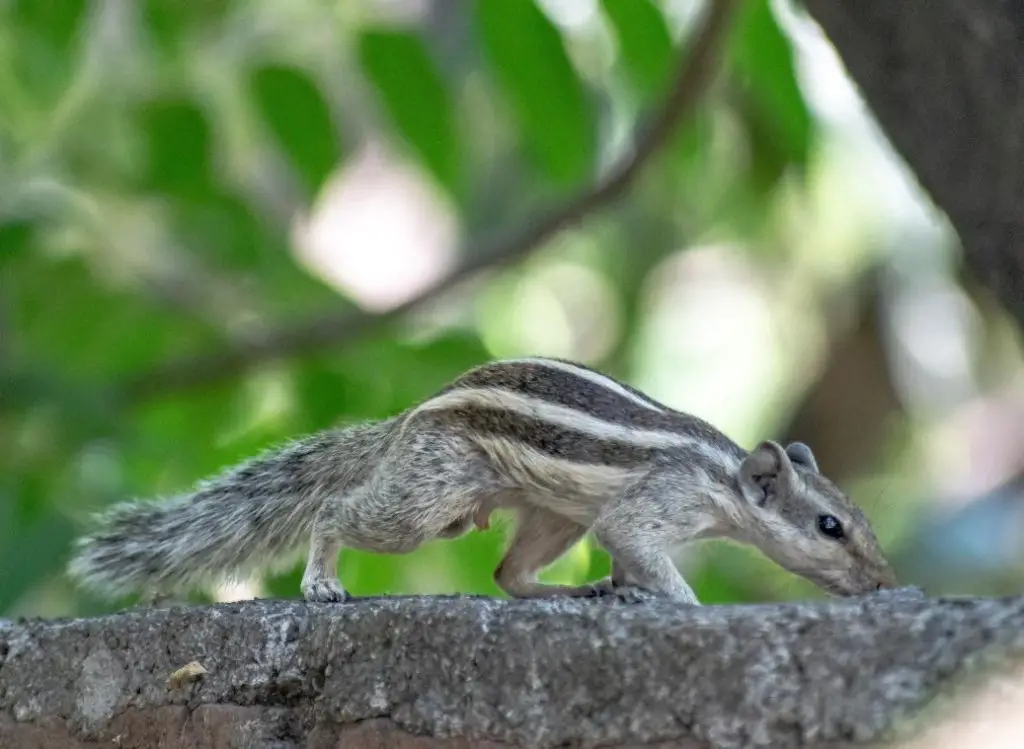
An Indian palm squirrel is a rodent found in India, Sri Lanka, and other parts of the world. Three brilliant white stripes run down the backs of their heads and tails, giving them a gray-brown coat. There are white stripes in between the dark olive-brown horizontal hud stripes. They only have lateral stripes on their bodies between the fore and hind limbs. White-grey hairs cover the tail, which is also covered with cream-colored fur. Lord Rama’s fingers are reported to have left these white stripes, which is an interesting fact.
Moorish Idol
| Scientific Name | Zanclus cornutus |
| Type of Animal | Fish |
| Diet | Omnivore |
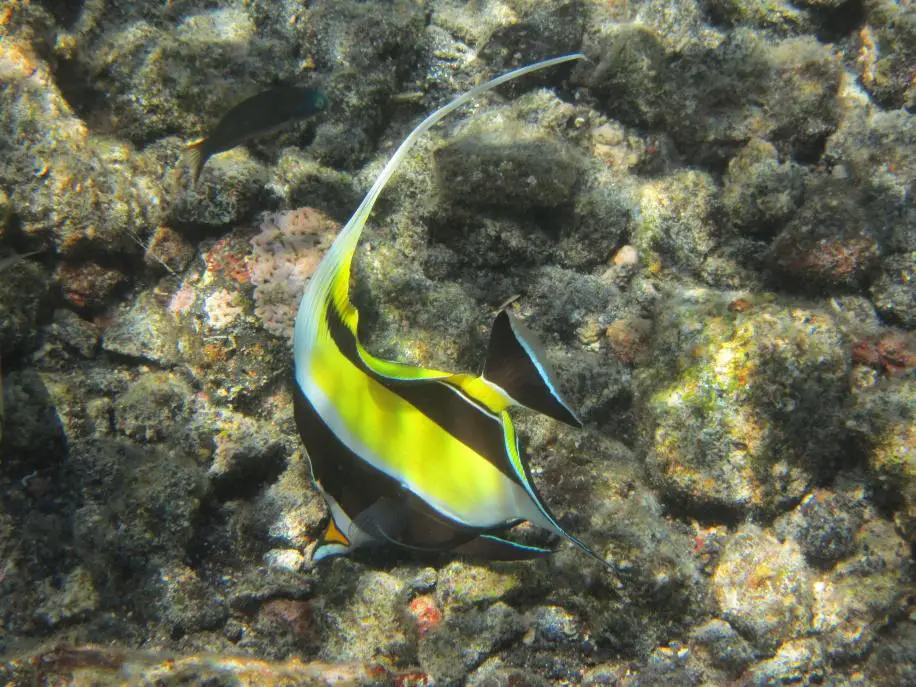
The Moorish idol is a marine fish that may be found in Africa’s oceans, the Indian and Pacific Oceans’ coral reefs, and other regions of the globe. The black, white, and yellow striped pattern is very gorgeous. There are 2-3 yellow vertical stripes between these stripes, which alternate with 3–4 black vertical stripes and thin white stripes. It has a beak-like mouth with a short, pointed tongue. However, these fish have a short lifespan. In Africa, these fish are surprisingly revered as a source of joy.
Aardwolf
| Scientific Name | Proteles cristata |
| Type of Animal | Mammal |
| Diet | Carnovore |
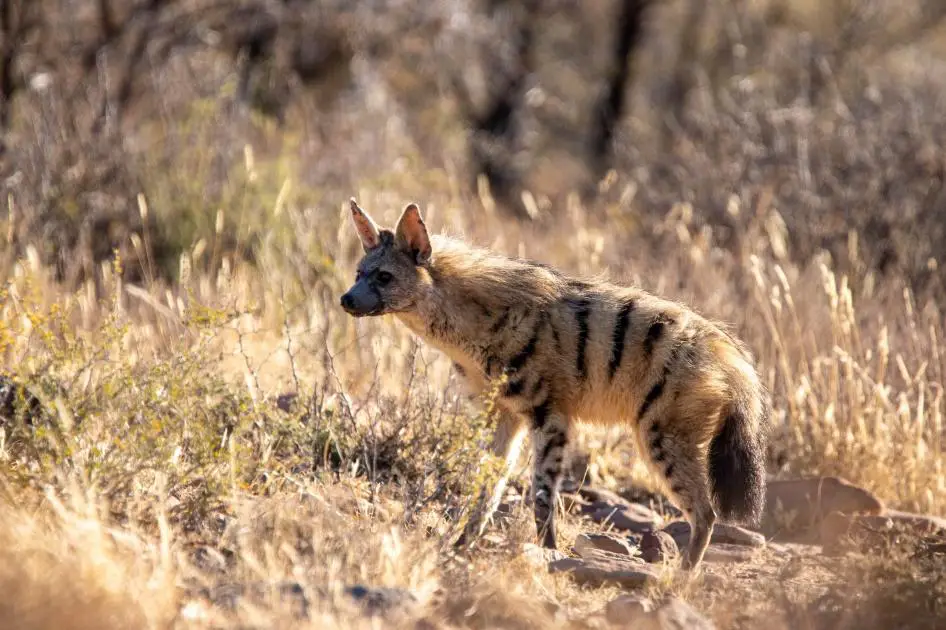
Aardwolves are nocturnal mammals found on many places on the globe, including South and East Africa. This insectivorous species is occasionally mistaken for a striped hyena, despite the fact that it is not one. The aardwolf is a small creature with brown-yellowish fur and black vertical stripes. Around 5-7 black stripes cover the back and side surfaces of the body, and they extend all the way down the backs of the legs. These black stripes on the legs and chest allow it to blend in with its environment.
Tabby Cat
| Scientific Name | Felis catus |
| Type of Animal | Mammal |
| Diet | Carnivore |
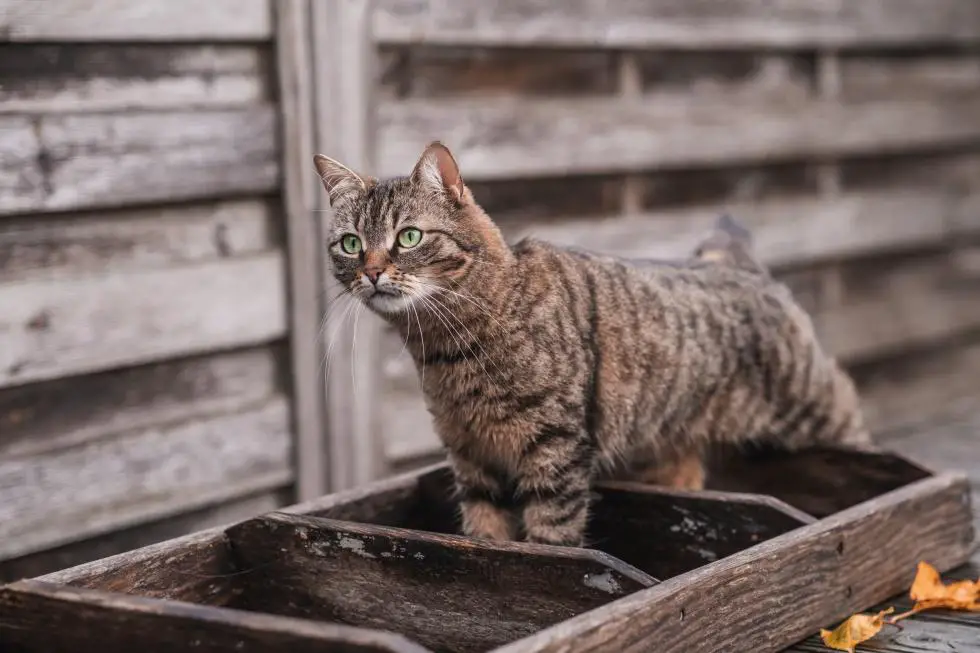
Tabby cats are a distinct breed with a long history dating back to the time of ancient Egypt. Tanning or orange fur covers their stomachs; the stripes on their backs and tails might be black, brown, grey, or white. Both the legs and the necks of tabby cats are speckled with stripes to go along with their distinctively striped coats. Because of its distinctive stripes, many people believe the Mackerel Tabby Cat is the original tabby cat. Long, thin black stripes run along the sides and stomach of the tabby cat. These cats may be identified by the distinctive “M” formations in the black fur on their foreheads. Cats with a “pepped nose” have a pink nose covered with black flecks.
Striped Marlin
| Scientific Name | Kajikia audax |
| Type of Animal | Fish |
| Diet | Carnivore |
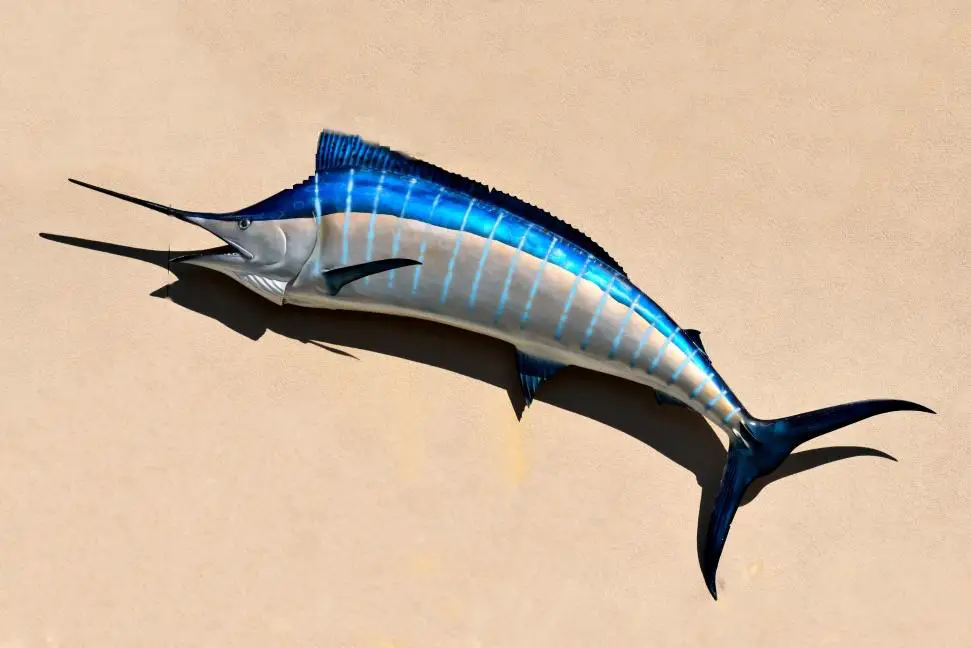
Striped Marlin is a fish that like to live in open water. They have a dark blue back and a silver belly, but their most distinctive feature is a stripe running down their back from head to tail. However, yellow and red are among the most often used colors for stripes. Stripes of pale blue and light purple appear on the fish’s flanks. It’s possible that it’ll change the color of its stripes when it’s feeding or mating. It’s a unique trait of the striped marlin because the fish grows more stripes on its side after it dies.
Bumblebee
| Scientific Name | Bombus |
| Type of Animal | Insect |
| Diet | Herbivore |
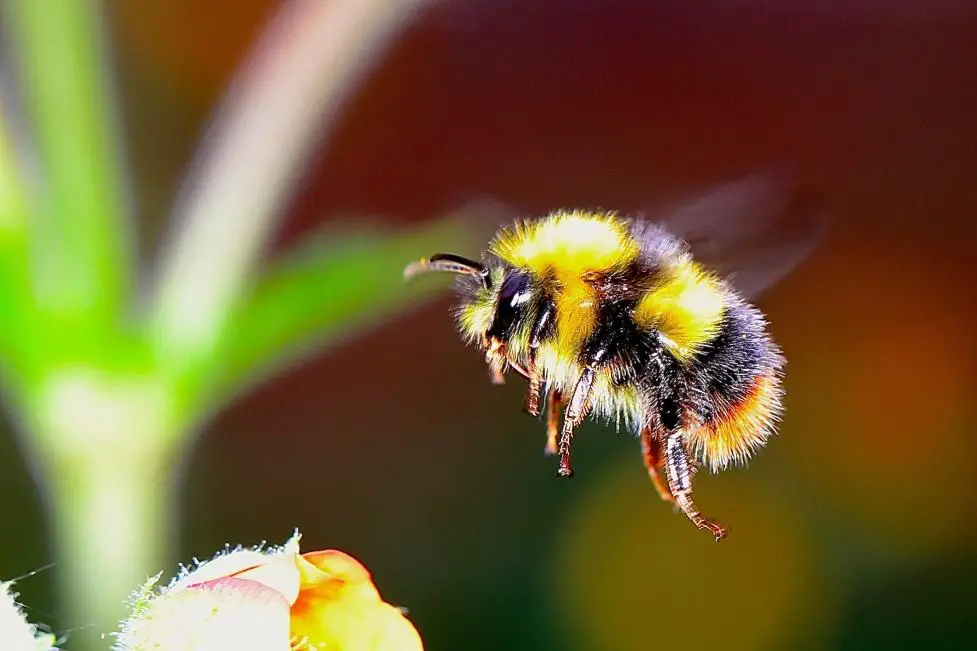
North American bumblebees are one of the best-known and most common insects in the region. Striped in black and yellow, they look like a pair of sneakers. In order to scare away predators, these stripes have been painted on their bodies in a warning pattern. Predators are deterred by the bumblebee’s striking stripes. A stinging bee is seen below, and the black and yellow striped design serve as a warning to birds flying above. They will be stung if they try to eat the bee, which is unpleasant. The stripes serve to protect both the bee and the predator.
Four Stripe Damsel Fish
| Scientific Name | Dascyllus |
| Type of Animal | Fish |
| Diet | Omnivore |
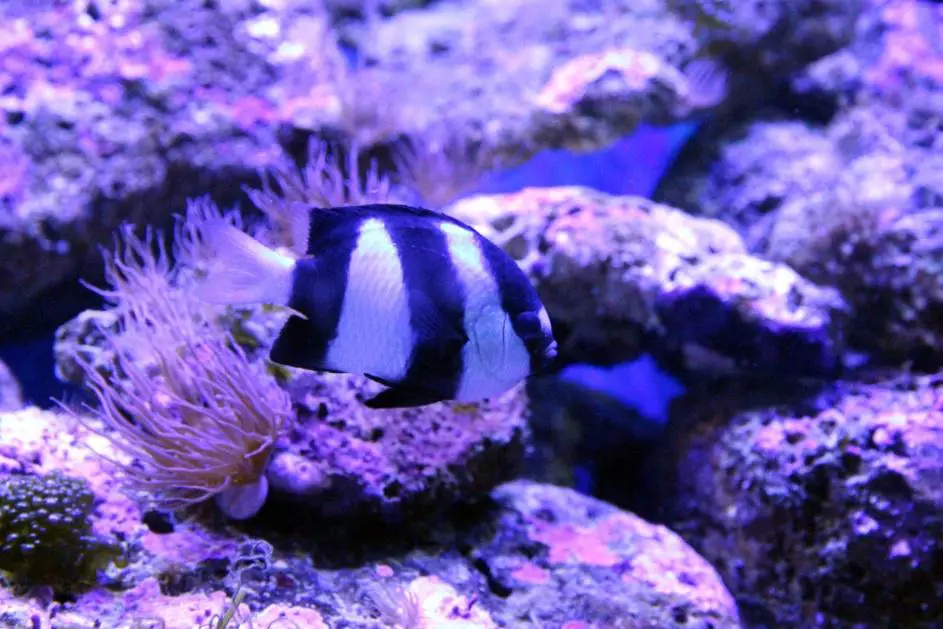
A blacktail dascyllus is a four-striped damselfish that lives in Indonesia, the Philippines, and New Guinea. Striped black and white fish are the subjects of this post. In the beginning, the white stripe has a mouth; the second is placed right behind its eyes, and so on. The third is located in the middle of its body, and the fourth on its tail. In addition to the two black stripes between the white ones on the caudal fins, there are three black stripes altogether. The black and white stripes let them blend in with the sun’s fading light and dark shadows.
Are There Any Animals With Stripes That Live On The Beach?
Yes, there are animals on the beach with stripes. One example is the zebra nerite snail. These small marine snails are commonly found along rocky shorelines or sandy beaches. Their distinct black and yellow stripes make them stand out among other shoreline creatures. These unique critters contribute to the diverse ecosystem of animals on the beach.
Zorse
| Scientific Name | Equus caballus |
| Type of Animal | Mammal |
| Diet | Herbivore |
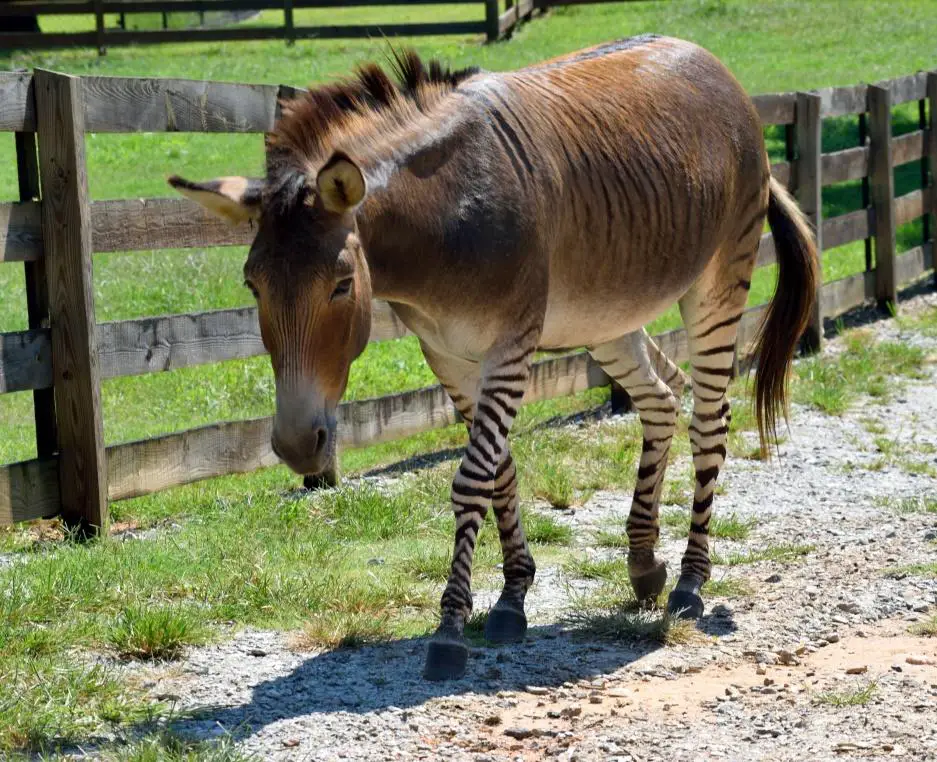
A Zorse is born when a zebra male and a horse female mate. It may be found in Africa’s woodlands and grasslands. They have a light body with zebra-like black and white stripes and a range of colours from golden brown to off-white. Whereas the parents’ coats are long, the baby’s is slender. The white and striped patches that appear on a horse or zebra calf’s body are passed on from the mother to the father. There are a lot of colours to choose from when it comes to a Zorse’s fur; they may come in a range of shades of white, brown, red, and black.
Conclusion
Striped animals may be found in a wide variety of habitats. Hundreds of creatures in the wild have stripes. Animals with stripes are thought to be able to blend in better with their surroundings by using their stripes as a kind of camouflage. This is simply a theory, but the fact that so many land and water organisms have developed stripes suggests that stripes must have some evolutionary advantage. In addition to their aesthetic value, stripes on animals play a critical role in their daily survival. They use stripes for different reasons, but the goal is the same: to stay alive.

